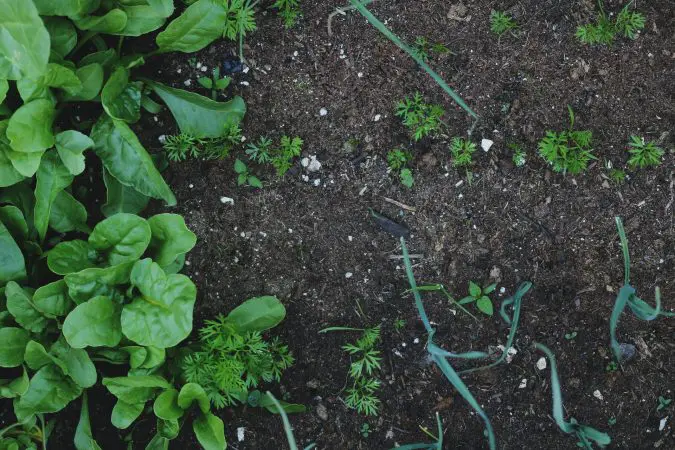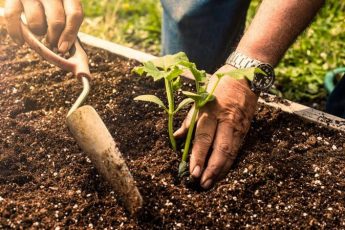The soil is found in abundance on the Earth’s crust, and hence a crucial aspect of farming. You will agree with me that the type of soil you use for your garden influences, to a large extent, the nature of its productivity.
The first step to take if you are fully ready to start your garden is to inspect the quality of the soil provided. For your garden to survive/flourish, you will need your soil to be rich in nutrients and grow garden plants.
It is one thing to be ready to start a garden, be it in a container or a vegetable garden, and it’s another thing to have the requirements. One of the requirements is having rich nutrient-filled soil that will improve the productivity of your plants. There are basic ways you can access the level of nutrients contained in your soil. A testing set shows you the soil’s pH concentration level and possible ways to improve your soil for higher productivity.
Let’s say you are set to start up your garden, and you are in a bit of a flux on which type is soil to purchase. Is it the compost? How do you mix them? This article will guide you.
We will be discussing the best garden soil to purchase and how to go about purchasing them.
Check out more about gardening, HERE.
Best Garden Soil to Buy

There are various soil and soil materials to pick from, so there is no need to be confused. They include
- Sandy soil
- silt
- chalky
- peaty
- clay soil
- loamy soil
Note that the soil is a combination of many particles; minerals, organic matter, and even organisms.
We will briefly look into the basics there, too, is soul mentioned above.
Types of Soil
Clay Soil
The clay soil, when wet, feels sticky to touch but gets hard when it is dried up. It cannot properly retain water.
Sandy Soil
The sandy soil is not your regular smooth sand. Unlike clay soil, sandy soil has a better drainage system but can not retain many nutrients.
Loamy Soil
Lo soil is a good-textured combination of clay, silt, and sand particles. To say that loamy soil has it all is not an understatement. With a well-structured nature, it has a high drainage system, and nutrient retaining capacity and is rich in essential nutrients.
Organic Products
One of the organic products is organic soil. Adding or purchasing organic soil is one sure way of increasing the soil nutrients. It could be that your current garden soil has lost its nutrients and the ability to flourish. Garden soil is rich in organic nutrients, lowers the pH system, and allows for plants like fruits, herbs, and vegetables.
The decomposition of organic mulch adds more nutrients to the soil, which increases the plant’s growth. Organic mulch is found in large amounts in farms and gardens at large. It gives your garden a better look and helps to combat weed growth.
Lastly, the addition of organic fertilizer is important for your garden needs. It is unlike the chemical fertilizers that harm the soil’s structure and damage its composition.
With the addition of organic fertilizers, the chances are high that your garden soil will be high in nutrients, increase infertility, and in its acidic/alkaline nature.
Container Garden
If you have limited space for your gardening requirements, going for a container garden is a good option. With this system, you get to harvest a variety of crops. Also, it saves you the stress of going for a bigger shave that might be above your budget. All you have to do is, clear up that space in the backyard or your balcony and source out the crops you intend to plant.
The container garden is not selective when it comes to planting on it. Vegetables and shrubs are examples of crops normally found in the container garden. Note that the size of your container determines the number of crops you plant. Although going for a bigger container is best because it gives you more space and tends to retain soil more.
The most suitable soil for your container garden is potting soil. It is because this type of soil is light and enables you to move your container about when the need arises.
Vegetable Bed
When constructing a new vegetable bed, there is no need to add soil to it. Instead, go for compost manure or organic matter.
Start by spreading the organic matter or manure on top of the vegetable bed and allow it for some time. Do not dig. Digging has a way of adding to the number of weeds found in the vegetable bed. Also, it breaks down the soil structure, and as a result, the organic nutrients begin to wither. You may consider buying a cover crop like the green manure for your vegetable bed.
Amongst the numerous soil requirements for your vegetable bed is the organic material. This organic material helps to generate enough nutrients and resources for the crops planted in the vegetable bed. It is good to note that organic matter is an essential element every vegetable plant should have, boosting its water-retaining capacity.
Garden Bed
During planting, most garden owners purchase additional soil for their gardens to replenish the soil nutrients. The soil includes the garden soil or, most times, the topsoil.
This garden bed is best suited for planting annual and perennial crops. It is important to ensure that the garden soil you purchase has enough nutrients to go around.
When available nutrients are spread throughout the plant parts, it generates food for microbes, and it also increases the amount of air found in the soil.
Conclusion
For your garden to flourish, basic soil management is important. The nature and type of soil determine the level of growth that occurs in the plants.
With a good knowledge of the best soil for your garden, be it a container garden, or even a vegetable bed, the occurrence of poor plant growth will be at a minimum.
Let us know what you think in the comments below. Take a look at our website to learn everything there is to know about landscaping.



